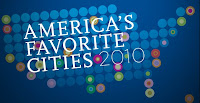This weekend the Star
gave an update on how the KC Strip Trolley is doing. This is the privately-run trolley service that runs past certain bars downtown late at night that was subsidized to the tune of $195,000 from public tax dollars, and another $200,000 in secured loans while at the same time the city was cutting ATA service due to lack of funding.
On the one hand, I am glad to get a few more drunk drivers off the road (although people responsible enough to pay $10 for a ride are people that were probably already responsible enough to get a cab or a designated driver). And hey, it is mass transit of sorts.
On the other hand, its public money being handed to a private business-owner to provide a service that is already being served by the private sector (taxi-cabs) at a time when legitimately needed transit services are being cut.
The two biggest benefits of public mass transit are (a) to provide transportation at reasonable costs for those that cannot afford private transportation; and (b) to foster development.
This accomplishes neither of those goals. The service is only late at night, rendering it useless for the majority of people. The fare is $10, not much different from what private transportation would cost. And with such limited ridership hours, there is zero chance of any development spin-off.
So what is being accomplished here?
Meanwhile, the conservative think-tank the
Show-Me Institute seems ready to use either the success or failure of this venture as evidence that public transit funding should be cut.
The KC Strip trolley service should prove to be a fairly good market test for trolleys in Missouri’s cities. If it prospers, it will show that such mass transit options do not require lavish public subsidies to survive. However, if it fails to make money, it’s a good indication that people are not terribly interested in riding a trolley system, so we should save our public dollars for more pressing needs.
Now if Show-Me Institute is simply saying there is no need to publicly fund these late-night drunk trolleys for tourists and suburbanites, then they are quite right.
However, I fear some fiscal conservatives will use this argument to be applied to mass transit more generally. See, if it works, that means the private market can better run mass transit! And if it doesn't work, that means there is no market for mass transit! Which of course, is silly. If there were a way to make mass transit profitable, the free market would
already be providing this service (as it is for late-night drunks!). It is the absence of a market solution that publicly funded mass transit is needed. Not to mention that this is a very limited service with very limited application and cannot possibly be used to illustrate whether or not mass transit on a wide scale should be publicly funded.
 It was a lively program featuring an interesting discussion of government officials, community activists, and regular citizens and brought focus to a sorely underdiscussed topic in this community - how will we grow?
It was a lively program featuring an interesting discussion of government officials, community activists, and regular citizens and brought focus to a sorely underdiscussed topic in this community - how will we grow?






























